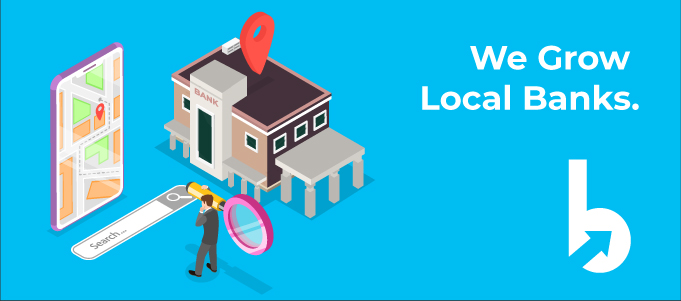Bank Marketing Strategy
In a previous article, we wrote about the importance of your digital bank branch, aka your website. In a world where banking customers prefer to move seamlessly between physical bank branches and online or mobile banking, investing in digital capabilities is key to staying competitive.
Both developers and digital marketing professionals are needed to make a bank website successful. Developers make sure the site is secure and works properly while digital marketers want to help more people find it by implementing best practices for SEO (search engine optimization). It seems like a symbiotic relationship, so why is there sometimes conflict between these two departments?
As with any working relationship, empathy and communication are the keys to a successful partnership between IT professionals and digital marketers. As a bank marketer interested in SEO services, you’ll likely need to get your bank’s IT department on board. In this article, we’ll cover the most common pet peeves developers have about SEO, show you how to make the business case for SEO, and explore strategies for a harmonious working relationship between developers and digital marketers. As a digital marketing agency focused exclusively on the banking industry, we have plenty of experience working with our clients’ IT departments.
Why Developers Don’t Like SEO

In order to succeed in persuading your audience, you have to understand where they’re coming from. When your audience is the IT department, they may have had a bad experience with SEO in the past. Here are the IT SEO pet peeves we encounter most frequently.
- Compliance: One of the first concerns IT often has is that SEO will interfere with the strict compliance required on bank websites. Banks are held to very high compliance standards, and they worry that adding more content, meta data, images, etc. opens up more opportunities for compliance issues to arise.
- User experience: It’s the developer’s job to make a site functional and user-friendly. Sometimes, developers think SEOs aren’t concerned enough with the big picture, of which SEO is just one part. Overcome this pet peeve by framing your SEO pitch in the context of the bigger objective. How can SEO contribute to a positive user experience?
- Time: Sometimes SEO requires time from IT in order to make technical adjustments that benefit website optimization. For example, we may need to contact developers for help with adding 301 redirects, unifying a domain, or adding code. Most web developers are stretched for time and resources, and they don’t want another person contacting them with requests. We find it helps to explain the ways we’ll need IT’s help upfront, and to reassure them that the SEO team can take it from there.
- The “so what?” question: When it comes to asking for website changes for SEO purposes, the only thing worse than disrespecting the IT department’s time is not providing sufficient justification for the change. Everyone, especially the developer, wants to know the ‘why’ behind a particular task.
- Only Google knows its algorithm: No one outside of Google, including SEO experts, can completely understand the Google algorithm. Also, no one can predict what Google will do or change next. So, don’t use “the algorithm” as your only justification for a web development request.
- Dubious practices: The SEOs out there who still use outdated methods like keyword stuffing or engage in “black hat” practices like link buying give everyone else a bad name. It can help to reassure the IT department that your SEO strategy doesn’t involve these dubious approaches.
- Frustrating Requests: Even valid SEO requests, like adding Google Tag Manager code to websites, can be frustrating for an already-overwhelmed IT department. When making these kinds of requests for SEO purposes, try to signal your understanding of and respect for the developer’s time and responsibilities.
- Control: A lot of time and effort go into creating and maintaining the website. It’s understandable that IT may be leary about providing access to organizations outside of the bank.
Once you’ve overcome the IT department’s specific objections to SEO, you might hear something like, “we just don’t like them,” or, “for all their promises, it doesn’t seem like there’s much of an ROI.” While you can’t always win everyone over, it may help to give the IT department a clear understanding of their role in the SEO process. For example, you could provide a checklist and any resources they’ll need to complete your requests.
How to Make the Business Case for SEO

As you can see from the list above, the best way to make the case for SEO (whether to the IT department or the C suite) is to focus on concrete metrics for measuring the success of a digital marketing campaign.
For example, how much organic traffic does the website currently attract to product and location pages? How many conversions are generated from organic traffic? What percentage of organic visitors are new to the website? Benchmark the current SEO value of your bank’s website and then set realistic growth goals.
Anticipate the “why?” and “so what?” questions so you can provide answers before they’re asked. Frame your SEO pitch in the context of loss aversion, i.e. not losing business to other banks who enjoy better visibility in organic search results for related products and services. There are lots of tools available to measure the visibility of your bank’s website against other financial institutions in your target market.
Comparing your bank’s website to competitors also gives you a helpful answer to any “can’t” arguments that arise. For example, if an executive raises compliance concerns over social media or content marketing, you can point to other banks that are successfully utilizing a blog or social media channels.
Create an SEO Forecast
Ultimately, the most persuasive way to make the case for SEO is to quantify the value of each conversion on your website. How much is a new customer worth, on average, over the lifetime of their relationship with your bank? Understanding how many website leads it takes to earn a new customer will allow you to attribute a dollar value to each website conversion, ultimately providing a more accurate ROI on your SEO efforts.
The SEO Team is Here to Help
Throughout your pitch for SEO services, make sure your CIO or marketing committee knows that an SEO agency will be here to help, not interfere. Instead of leaving everything on the IT team’s plate to figure out, an SEO partner can stay ahead of digital marketing best practices for the banking industry to ensure your website continually evolves. This will help with IT’s time crunch.
How SEOs and Developers Can Work Together

There is no innate reason why SEO professionals shouldn’t get along with the IT department. As a bank marketer, one of the most important things you can do to get digital marketing buy-in is to choose an agency with proven results, excellent communication, and complete transparency in what they do. This decision alone will prevent many of the common problems that arise between SEOs and developers. Here are a few more best practices to discuss with your SEO strategist:
- Look at the IT department as your collaborators instead of people to give instructions to.
- Developers need to make things scale. Keep this objective in mind when asking for SEO changes to a website.
- Good relationships are built on foundations of mutual respect. Both SEO and web development are highly specialized skills, it’s important to stay in your lane!
- Patience is a virtue–remember that your change requests must compete with other tasks in the developer’s queue.
Find a true partner for all of your SEO Needs

If you’re considering digital marketing services for your bank, you already know how important SEO is for reaching new prospects and engaging your existing customers. Our BankBound team is ready to leverage our industry expertise to support your bank and its marketing goals. Contact us today to learn how we can grow your bank!

